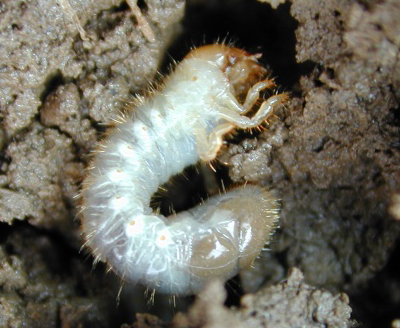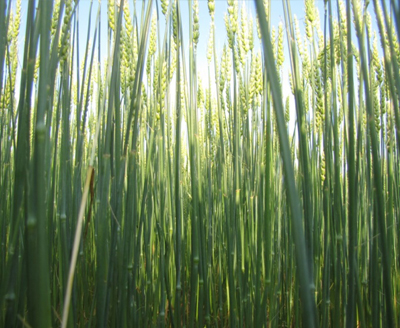
- Let’s learn from experience and start thinking about what we can do to improve our future pest management plans.
- It is possible that areas with heavy white grub pressure in the spring coincide with high Japanese beetle numbers the previous year.
- Scouting crops planted into or next to cereal crops with heavy armyworm pressure is necessary to assess damage and make insecticide decisions.
Let’s learn from experience. Even if it’s too late to reverse the damage caused by insect pests for which no rescue treatments are available, we can modify our next year’s management plans accordingly. A few areas have experienced high populations of white grubs as corn is approaching the V5 growth stage. At this point the only options we have are to: 1) hope that our insecticide seed treatment provides some protection or 2) to replant, if grub densities are too heavy and stand problems are observed. Neonicotinoid seed treatment rates of at least 500 (ug/kernel) will provide good control of white grubs, while lower rates will need to be complemented with an at-plant application of an insecticide, if pressure warrants. Making replant decisions is complicated and a lot of other factors need to be taken into consideration. These include optimum yield, costs of replanting, weather, hybrid maturity, replanting date, etc. Additionally a soil insecticide should be applied if replanting when grubs are actively feeding and there are still a few weeks left till pupation. A good helpful article on replanting decisions can be found
here.
It is possible that areas with heavy white grub pressure in the spring coincide with high Japanese beetle numbers the previous year. Although not all grub species are Japanese beetle larvae, keeping records of Japanese beetle adult populations on soybeans and corn during summer can help us be more proactive with our preplant scouting the following year. Fields with large numbers of beetles during summer, or significant grub infestations in the spring, should be sampled prior to planting. Sample at least 5 areas in the field by digging 2 x 1 ft rectangles of soil about 6” deep. Finding two or more grubs in each of those rectangles could indicate a potential for damage. If seed has been purchased and a low rate of seed insecticide was chosen, consider putting an insecticide application at planting. OP’s and pyrethroids are good options. Even if Japanese beetle adult and larval populations were not significant the previous summer, spring sampling will allow us to tweak management plans while there is still time. If we skip the pre-plant sampling but find grubs turning up during soil tillage operations, recording those numbers can also help us determine the potential for damage and make last minute management decisions if possible.

Armyworms. Armyworm moths fly in the spring and look for preferred egg-laying sites. These include pastures, cereals and weeds in no-till or reduced till fields. In wheat, leaf feeding will occur and head clipping may be observed. If feeding is observed on the flag leaf and heads are clipped, a control may warrant if worms are still small. Corn fields should be scouted for armyworm damage especially if planted in no-till ground or neighboring cereal cover crops where armyworms are present. As the cover crop is killed, the larvae will start looking for other food sources and corn is a suitable meal for armyworms. Damage will occur mostly at night and will start on the leaf margins toward the midrib. Under heavy pressure leaves may be completely stripped off with only the midribs left. Although not the most preferred crop for armyworms, soybeans planted into wheat stubble or dying rye with heavy armyworm pressure could potentially be at risk. If the larvae are starving and soybeans are the only food available, some damage may occur. Scouting crops planted into or next to cereal crops with heavy armyworm pressure is the only way to assess damage and make insecticide decisions if necessary. Armyworms can be hard to find during the day as they are most active at night so, while scouting, make sure to check under crop residue. Examine 20 plants in 5 areas of the field and record the number of plants showing signs of armyworm feeding. You may start by examining the areas adjacent to small grains or rye. Control may be warranted if 25% of more plants show feeding. Insecticide applications are effective as long as the larvae are small (1” or less). Small larvae are easier to kill and have a lot of feeding time left. Spot treatments can be effective if the damage and armyworm presence is concentrated on the edge or defined areas of the field. Occasionally, if planting into a killed rye crop with heavy armyworm pressure, tank mixing an insecticide with the rye burndown products (i.e. glyphosate) may be considered.
Photo 1. White grub in soil (Source: GROWMARK, Inc.)
Photo 2. Severe armyworm feeding (stripped leaves) on wheat.(Source: GROWMARK, Inc.)